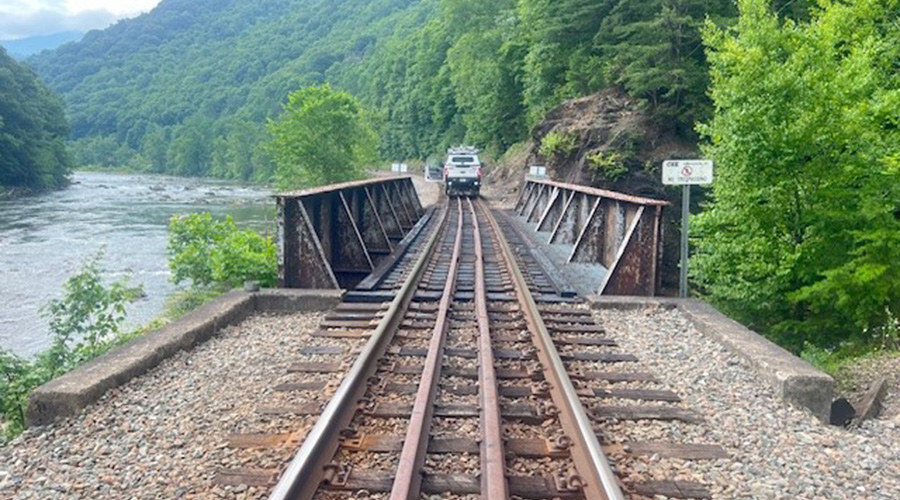CPKC's Brooks at MARS meeting: 'We are in a new age of railroading'
7/19/2023
By Jeff Stagl, Managing Editor
John Brooks led off the Midwest Association of Rail Shippers’ summer meeting July 11 by underscoring the stress Canadian Pacific and Kansas City Southern leaders were under to pull off their merger.
Well before the official formation of Canadian Pacific Kansas City in April, “I had hair,” joked Brooks — CPKC’s executive vice president and chief marketing officer — who’s bald.
But all the anxiety was worth it since the newest Class I now controls a network that serves as a single-line “super highway” from Canada to Mexico, he stressed during his keynote address before an audience of several hundred in Lake Geneva, Wisconsin.
“We are in a new age of railroading. It’s all about direct service, with no interchanges,” said Brooks.
Yet connectivity with other railroads remains paramount to grow traffic and revenue. To that end, CPKC connects with more than 90 short lines, which are interested in opening up their networks to the Class I, Brooks said.
“Global companies want to find ways to de-risk the movement of their goods to customers,” he said, adding that such a trend drives the momentum that’s evident in global supply chains.
CPKC now owns more than 6,000 developable acres across its network that can be mined to attract business. The Class I’s leaders are determining how to turn those acres into unique assets, said Brooks.
“It can harden supply chains, and better position the railroad and customers to be successful,” he said.
 Brooks described how CPKC determined there are 1.8 million trucks moving between Mexico and the United States that could be diverted to rail. Jeff Stagl
Brooks described how CPKC determined there are 1.8 million trucks moving between Mexico and the United States that could be diverted to rail. Jeff StaglFor example, CPKC is working with Americold Realty Trust to locate cold storage warehouses along the railroad’s network. In late June, the partners announced plans to establish the first one in Kansas City, Missouri. Others might follow in the near future, perhaps in major Canadian markets, or in Dallas or Houston, Brooks said.
“We will see a series of these cold storage facilities,” he said.
CPKC also plans to spur business growth in the automotive, agricultural and intermodal sectors by stressing innovation and sustainability, Brooks emphasized.
In terms of intermodal, the Class I recently conducted its own analysis that showed 1.8 million trucks moving between Mexico and the United States form an addressable market of traffic that could be diverted to rail. That’s why CPKC in May unveiled the new Mexico Midwest Express (MMX) Series cross-border intermodal service.
The service links the Chicago, Kansas City and Texas markets in the United States with the Monterrey and San Luis Potosi markets in Mexico. MMX offers intermodal transit times that are competitive with trucks, in some cases providing service that’s a day faster than the nearest competitor’s, said Brooks.
MMX service is advertised as a five-day service, but MMX trains have been completing routes in less than four days.
“That’s staggering. It’s what a single truck driver could do,” said Brooks.
In the automotive market, CPKC is striving to bring innovation to the marketplace. For example, the railroad plans to create a “self-sustaining loop” involving 17 automotive plants in Mexico, and eight or nine in the U.S. Northeast and Canada. CPKC trains would link service to all the plants without relying on any connecting carriers, Brooks said, adding that such operations could feed the growing electric vehicles market.
“This would be a new level of connection that the market has not had in the past. A closed loop will create density for us,” he said.
In the agricultural products market — which generates one-third of CPKC’s annual revenue — the Class I is trying to distance itself from CP’s origin-rich but destination-poor struggles, Brooks said. The railroad is working to eliminate connections and serve as more of a matchmaker with shippers to gain more momentum in the sector.
“New origins/destinations are emerging that we’ve never had before,” said Brooks.
CPKC leaders also continue to believe in and implement the long grain train model created by CP. A High Efficiency Product train model pursued by CP featured newer and more efficient hoppers, and more cars in total. An 8,500-foot train can pull 134 hoppers, providing 20% more capacity than a 112-car grain train.
“We have gone from just a few to 66 long trains now,” said Brooks.


